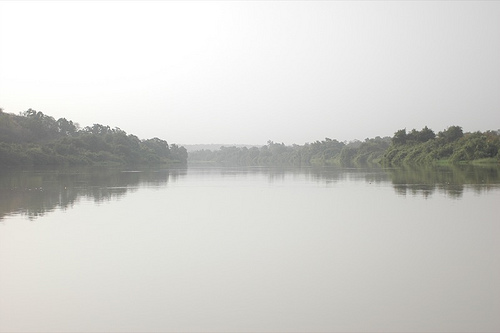

Location: Map
Area: 10,000 km²
W National Park in Benin forms part of the transboundary W-Arly-Pendjari (WAP) Complex, the largest intact ecosystem in West Africa, spanning Benin, Burkina Faso, and Niger. Named after the distinctive W-shaped bend in the Niger River, the Benin portion covers over 8,000 km² and is contiguous with Pendjari National Park, contributing to a total protected landscape of 26,361 km². This UNESCO World Heritage Site (inscribed in 1996 and expanded in 2017) is renowned for its Sudano-Sahelian savanna, serving as a critical refuge for endangered wildlife amid regional threats like poaching, habitat loss, and insecurity. Managed by African Parks since June 2020 under a 10-year partnership with the Benin government, the park balances conservation with community development, though ongoing jihadist threats have limited tourism. It features diverse habitats including savannas, gallery forests, and riverine systems, supporting over 50 large mammal species and highlighting West Africa's biodiversity hotspot.
Established on August 4, 1954, as part of the colonial-era W Regional Park, the park initially focused on protecting the Niger River's unique bend and surrounding ecosystems. Post-independence, it evolved into a transboundary initiative governed by Benin, Burkina Faso, and Niger. The Benin section gained prominence in the 1990s with its inclusion in the UNESCO World Heritage listing in 1996 (as an extension to Niger's core site), further expanded in 2017 to encompass the full WAP Complex. Historically a malarial wetland zone until the 1970s, it was once a major human habitation area, evidenced by archaeological sites like tombs dating back millennia. Management shifted significantly in 2019 with a Priority Intervention Plan involving the Benin Government, West African Savannah Foundation (FSOA), and African Parks to enhance law enforcement and infrastructure. In June 2020, African Parks assumed full management of Benin's 8,000 km² portion, marking the second park in Benin under their oversight after Pendjari. The park has faced violence, including a 2022 landmine attack killing eight, a 2024 gun ambush claiming 12 lives, and a 2025 attack killing 54 soldiers, attributed to groups like Jama'at Nasr al-Islam wal-Muslimin, underscoring security challenges in the region.
Located in northern Benin near the borders with Burkina Faso and Niger, at coordinates approximately 12°31′31″N 2°39′48″E, the park's Benin section spans over 8,000 km² of largely uninhabited terrain. It centers around the meander of the Niger River, with the Mékrou and Alibori rivers draining the area as part of the Volta and Niger basins. The landscape features an undulating plateau with thorny scrub in the north, transitioning to savanna, grassy parklands, and wetlands broken by rocky hills. Seasonal water flows create diverse habitats, including riparian zones and floodplains. The park is part of the larger WAP Complex, ensuring connectivity for wildlife migration. Nearest towns include Kandi in Benin, with the park's remoteness aiding preservation but complicating access.
The park lies in the transition zone between Sudanese savannas and Guinean forests, featuring intact Sudano-Sahelian ecosystems with grasslands, shrublands, wooded savannas, gallery forests, riparian forests, and rare semi-deciduous forests like Bondjagou. Vegetation includes 454 plant species, with trees such as oil palms, rônier palms, coconut palms, kapok, mahogany, ebony, and two orchids unique to the region. Human-induced fire regimes, practiced for about 50,000 years, maintain vegetation diversity, while seasonal flooding from rivers shapes aquatic and semi-aquatic habitats. As a Ramsar wetland site, it supports high fish endemism (seven of nine endemic species in the Volta Basin). The ecology is dynamic, with traditional burning preventing bush encroachment and promoting biodiversity, though climate change and human pressures pose risks.
W National Park is a biodiversity stronghold, hosting over 50 large mammal species, including the last viable populations of West African lion (estimated 50-100 in the complex), Northwest African cheetah (about 25 individuals), and korrigum antelope. Other key species include African bush elephants (85% of West Africa's savanna population), buffalo, hippopotamus, leopard, African wild dog (possibly locally extinct), aardvark, baboon, caracal, serval, warthog, spotted and striped hyena, and antelopes like western hartebeest. The West African giraffe is absent. Birdlife is rich with over 350 species, including migratory birds, making it an Important Bird Area. Aquatic fauna includes African manatee and diverse fish. Conservation efforts, like annual cattle vaccinations for 27,000 animals, prevent disease transmission. Wildlife faces threats from poaching and overgrazing, but the park's size supports natural movements.
Key attractions include the Niger River's scenic W-bend, natural pools for wildlife viewing, and archaeological sites like ancient tombs. In Pendjari (contiguous), highlights are waterholes like Mare Bai for stargazing and elephant sightings. Activities are limited due to security, but potential includes guided patrols, helicopter flights for aerial views, and community interactions like Bariba Horsemen demonstrations. Infrastructure features graded roads, airstrips, and ranger facilities, but tourism is currently suspended in the "red zone." When safe, it offers wildlife safaris focusing on elephants drinking or cheetahs in savannas.
The park holds cultural significance for local communities, with archaeological evidence of ancient habitation. Initiatives promote sustainable livelihoods like beekeeping, shea and baobab harvesting, fishing, and the "Pur" brand for local products. Environmental education reaches 6,000 schoolchildren annually, including wildlife art competitions. Traditional fire management by communities sustains ecosystems. Interactions include celebrations at solar-powered water points with drumming and dancing, fostering conservation support amid reliance on park resources.
As of 2025, W National Park in Benin operates under African Parks' management, supported by the government and FSOA. Security remains precarious due to jihadist incursions from Burkina Faso, with over 3,000 soldiers deployed and rangers conducting anti-IED patrols. Tourism is off-limits following attacks, including the April 2025 incident killing 54 soldiers. Conservation advances include infrastructure rehabilitation, community projects like boreholes and malaria prevention, and wildlife monitoring (e.g., elephant collaring). Threats persist from poaching, illegal grazing, agricultural encroachment, and climate change, addressed through a 10-year plan and transboundary agreements. Funding comes from government and endowments, with calls for more investment to ensure sustainability.